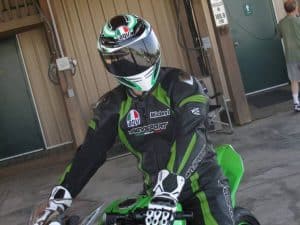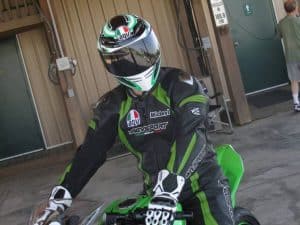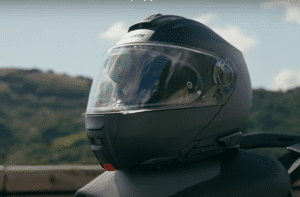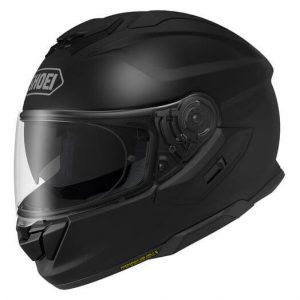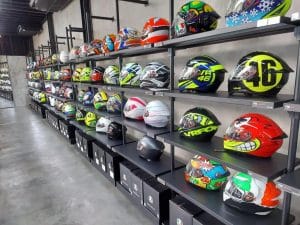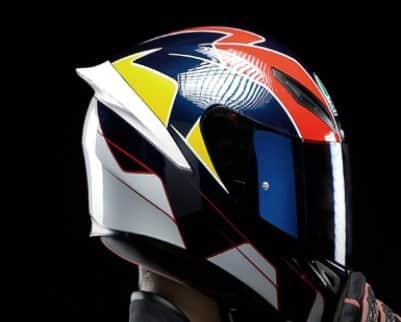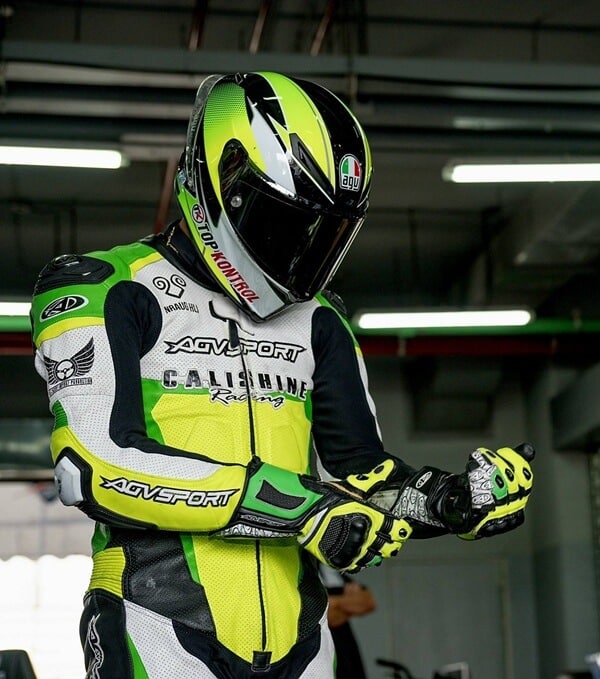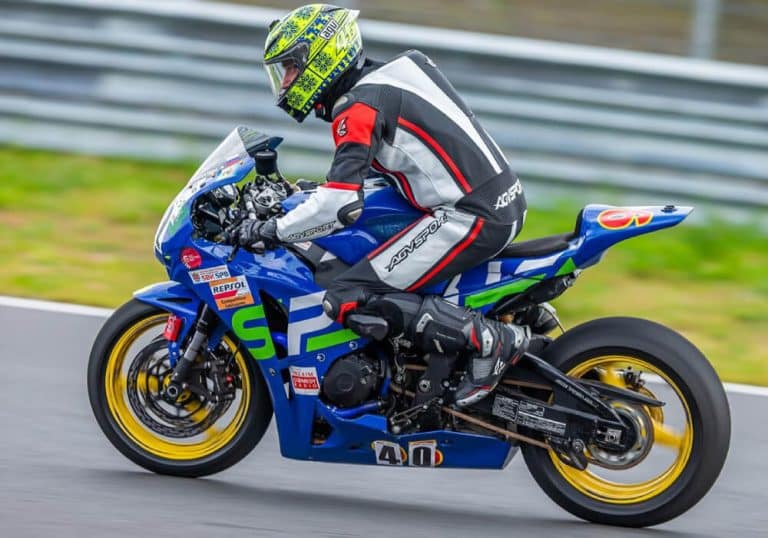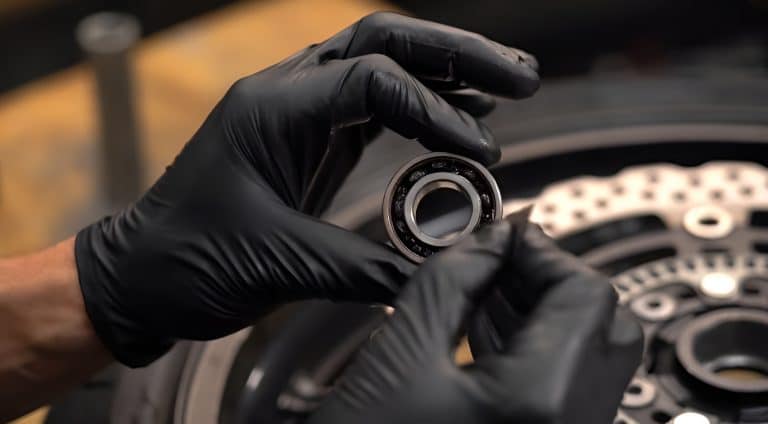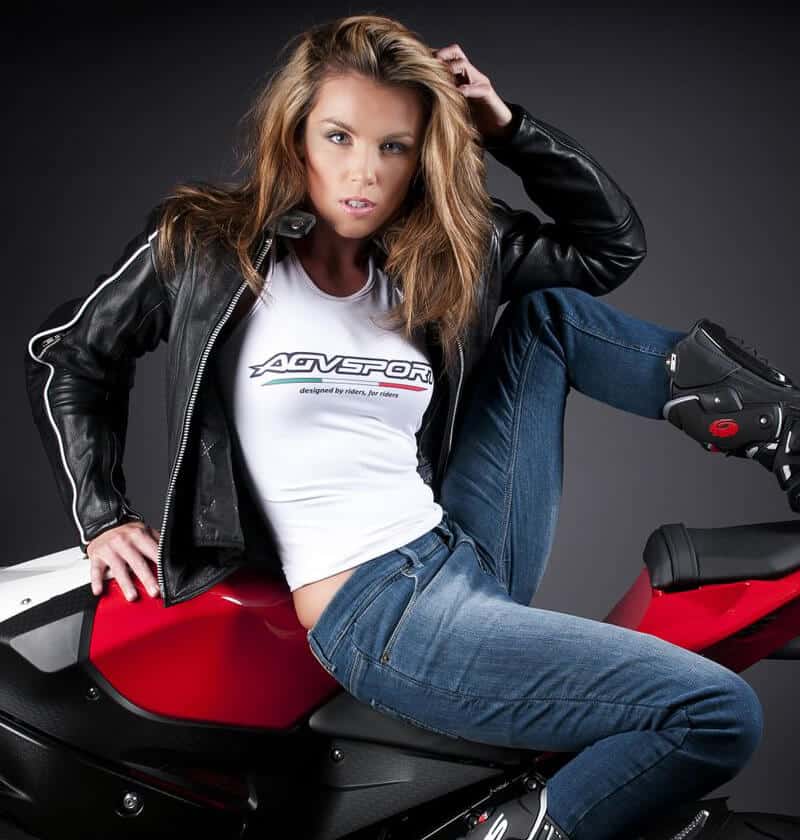I was lucky enough to test-ride the all-new 2026 Honda CB1000GT in Spain’s Alicante, covering 140 brisk kilometers (over 86 miles) after its presentation at the Melià Villaitana Resort in Benidorm over the weekend. It felt like a full-circle moment, coming almost exactly a year after I rode the CB1000 Hornet on on the same spectacular Spanish hinterland mountain roads. And just as it did when it first caught my eye at Honda’s 2025 EICMA stand, before I even noticed the placard, the CB1000GT impressed me again, not by shouting for attention, but by looking fully resolved.
From a distance, it is unmistakably a CB, with its aggressive shoulders and sculpted tank. Yet the silhouette has matured. The half-fairing tucks cleanly into a purposeful touring stance that avoids looking over-styled, and the windscreen clearly aims for hours in the saddle rather than seconds on a racetrack.
Up close, the finish is textbook Honda with clean panel joins, neatly routed wiring, and switchgear that feels reassuring under the thumb. The cockpit (rider’s control zone) appears designed for usability above all else, with every control placed for function rather than flash.
Even before sitting on it, I could see the posture had shifted from the Hornet’s. The CB1000GT stands slightly taller and more composed, with bars and seat that create an upright, neutral riding position built for distance. Small details, from the way the screen blends into the cowling to the subtle weatherproofing around the dash, reinforce the sense of a machine engineered for practicality and long-haul comfort. It presents itself as a sport-tourer ready for both spirited B-road rides and wet, windy cross-country hauls. I was more than ready to find out if it delivered.
And on the road, the ride matched the promise. The Honda CB1000GT is an easy recommendation for riders who want four-cylinder character paired with sensible, real-world sport-touring manners.
| First Impressions | Highlights |
|---|---|
| ✅ The engine keeps its Fireblade genes, smooth and tractable up to 6,000 rpm ✅ Comfortable ergonomics (lower footpegs, higher handlebars) without reducing sporting potential or lean-in/agility ✅ The four preset electronic chassis modes correspond to riding modes; suspension damping is adjustable separately in the menu ✅ Sportsbike performance with proper practicality ✅ Wind protection is solid for average riders but taller riders (180 cm+) may want a higher screen ✅ Front mudguard too short, road muck cakes the exhaust and engine ✅ Stable at 75 mph (120 km/h) with the standard panniers and still balanced without them ✅ Elevated silencer reduces right pannier capacity by about one-third ✅ Excellent kit-to-price ratio, offering strong value versus rivals ✅ Great bike but less ideal for 6 ft. or taller riders | ● Power: 147.6 hp / 110.1 kW ● Torque: 75 ft·lb / 102 Nm ● Top Speed: 124 mph / 200 kph ● 0-60 mph: 3.2 sec ● Suspension: Showa EERS (electronically controlled) ● Electronics: 6-axis IMU (lean-sensitive ABS & TC) ● Tank Range: 217.5 mi / 349 km ● Seat Height: Medium 32.5 in / 825 mm ● Weight: Medium 505 lbs / 229 kg ● Price MSRP: £11,999 (UK) / €13,999 ( EU) / est. $13,499 (US) / est. ₹13 lakh (India) |
EICMA 2025 Reveal and Benidorm Presentation: What Honda Showed
At its EICMA 2025 press event on November 14, Honda unveiled the CB1000GT as its new sport-touring flagship, aimed at bridging the gap between the agile CB1000 Hornet and the long-distance NT1100. About a week later, at the Melia Villaitana Resort in Benidorm, the CB1000GT was presented in Grand Prix Red (my pick for the test ride), Pearl Deep Mud Gray, and Graphite Black. Just like at EICMA, each model featured factory panniers, a main stand, and a 5-stage manually adjustable windscreen, signaling Honda’s intent to challenge premium midweight tourers.
According to Honda’s data sheet, CB1000GT’s power comes from Honda’s 999 cc liquid-cooled DOHC inline-four (76 × 55.1 mm, compression 11.7:1), tuned for smoother midrange delivery and quieter operation than the Hornet. Output is rated at 147.6 hp (110 kW) at 11,000 rpm and 75 lb.-ft. (102 Nm) at 8,750 rpm. Kerb weight is listed at 229 kg and a 21-litre fuel tank, with a quoted fuel consumption around 6 L/100 km, giving a practical 200-plus mile range between stops.
The chassis combines a diamond-style steel frame with a cast Pro-Link swingarm and Showa suspension. Up front is a 41 mm USD fork with manual preload adjustment, while the rear uses Honda’s EERA electronically controlled suspension with a remote-adjust preload unit. Braking is handled by dual 310 mm front discs with Nissin radial-mount four-piston calipers and a 240 mm rear disc, managed by a six-axis IMU for cornering ABS and traction control. The setup is tuned for stability, comfort, and confident braking when loaded or touring two-up.
Electronics include four preset ride modes (Standard, Rain, Sport, Tour) plus a User mode, Honda Selectable Torque Control, Wheelie Control, a bi-directional quickshifter, cruise control 50-160 km/h, and Emergency Stop Signal. A large 5-inch TFT handles Honda RoadSync smartphone integration for navigation, calls, and media. Heated grips are standard.
Taken together, the 2026 Honda CB1000GT presents itself as a mature, fully realized, production-ready sport-tourer, built for real-world distance yet still appealing to riders like me who value a healthy dose of sport in their sport-touring over showstand theatrics.
Key Features of the 2026 Honda CB1000GT
After reviewing the CB1000GT’s full press release and completing a 140 km first ride in real-world conditions, because spec sheets only tell half the story and the real proof is in the ride, here is what I found to matter most:
Engine and Performance
⭐⭐⭐⭐⭐ (5/5)
| Feature | How It Works | Rider Benefit |
|---|---|---|
| High-revving 998cc DOHC inline-4 Engine (from 2017 Fireblade) | Short stroke (55.1 mm) and 11.7:1 compression enable aggressive revving and high peak power | Sharp throttle response and a broad powerband useful for overtaking and sport riding |
| 147.6 hp (110.1 kW) at 11,000 rpm Power; 75 lb.-ft. (102 Nm) at 8,750 rpm Torque | Almost Hornet-level power (7 hp over the Hornet SP), tuned smoother | Ample horsepower for high-speed cruising and spirited riding, yet re-tuned to deliver usable midrange grunt for touring |
| Assist-and-Slipper Clutch | Reduces lever effort and cancels wheel-hop under hard downshifts | Smoother shifting in sport riding, less fatigue on long rides |
| 6-Speed with Quickshifter (Standard) | Enables clutchless up- (and down-) shifts | Rapid gear changes without clutch work, making both sporty cornering and highway overtakes easier and less tiring |
| Larger 21L Fuel Tank | Combined with 47 mpg (6.0 L/100km) economy for around 210+ mile range | Stable at speed, comfortable for hours, and pannier-compatible for loaded trips. |
The Honda CB1000GT runs a high-revving, sport-leaning 998 cc inline-four, carried over from the CB1000 Hornet and originally born in the Fireblade. Even the front headlight design nods to its supersport heritage. For GT duty, though, the engine has been retuned to suit its dual role of performance with long-distance comfort. Its 76.0 x 55.1 mm bore and stroke and 11.7:1 compression deliver 147.6 hp (110.1 kW) at 11,000 rpm and roughly 75 lb.-ft. (102 Nm) at 8,750 rpm. That’s close to the Hornet’s 155 hp and 78.9 lb.-ft., but the CB1000GT dishes it out with a smoother, more controlled surge (less bite, more glide), perfect for covering miles without wearing you out.
Out on the road, the engine felt remarkably smooth. Power builds cleanly from idle all the way to the redline, with no hesitations or spikes. From a standstill, the CB1000GT launched to 60 mph in about 3.2 seconds, a clear reminder that beneath its half-fairing and relaxed touring posture lies an engine with unmistakably sporty instincts.
What impressed me most, though, was the predictability of the throttle response. Instead of snapping forward in an abrupt rush, the power builds progressively, which made my overtakes feel calm and controlled at any speed. There’s enough low-to-mid-range torque to pass without needing to chase the top of the rev band. That said, I still think the touring-oriented inline-triples, like the 113 hp unit in the Tiger Sport 800 (despite its lower peak power), deliver a more natural blend of low-end torque and midrange drive in the lower half of the tachometer.
The CB1000GT, while impressive in many respects, does show a minor shortfall in that area, much like what I’ve experienced on the Suzuki GSX-1000GT and Kawasaki Versys 1100GT. The Ninja 1000SX remains the exception, with genuinely strong low and midrange pull. Even so, the CB1000GT’s smooth, linear power delivery kept sustained 70-80 mph highway cruising completely effortless. It holds speed with composure rather than depending solely on high-rpm power reserves to do the work.
The motor’s character still leans sporty (it likes revs), but the gearing and chassis changes temper that aggression, making the bike more comfortable for long days in the saddle. The inline-four layout eliminates nearly all vibration (my only minor notes being faint buzz through the seat and bars, but nothing that’s a dealbreaker, as they’re far less than what I’ve felt on the BMW S 1000 XR), thanks to its even firing order and the inherent balance of four cylinders, which smooth out power pulses. Longer stretches of road were more comfortable than I expected. At 65-75 mph, the engine’s smoothness was evident throughout the rev range.
And the high-revving nature of the motor, aided by its short stroke (55.1 mm), provided a thrilling yet controlled experience throughout my rider, whether I was cruising or accelerating hard. At no point did the engine feel harsh or uncomfortable.
Honda pairs that character with a six-speed gearbox clearly calibrated for touring. Gears 2 through 5 are optimized for mid-range acceleration, and I could obviously feel the difference when powering through the gears on winding backroads. The bike pulled strongly in each gear, without any noticeable flat spots, allowing me to maintain smooth throttle response and keep my momentum going. In the 40-60 mph range, during overtakes or when edging toward triple-digit speeds, the delivery stayed smooth and predictable. The taller sixth gear also paid dividends on the highway, letting the engine relax while still holding speed with minimal effort.
Compared with the CB1000 Hornet, the GT’s calibration shifts away from lap-time aggression toward maintaining pace comfortably over long distances, where the engine, while still sporty, feels more settled. Reworked gearing, a broader mid-range, a larger 21-liter tank (up from the Hornet’s 17 liters), and touring-focused ergonomics (more upright riding posture, taller bars, better seat padding, and improved wind protection) collectively turn the energetic inline-four into a far more agreeable mile-eater.
Against rivals, the 148 hp CB1000GT out-muscles lighter 900-class machines such as the Kawasaki Z900 (123 hp) and Yamaha MT-09 (117 hp) in top-end performance, but it trades some low-down shove compared with parallel-twin tourers like the Honda Africa Twin (94 lb.-ft. at 6,000 rpm), which favors torque over peak horsepower. Still, at 80 mph the GT felt unruffled and ready, pulling strongly with a simple twist of the throttle and without needing frequent downshifts or high revs.
Honda’s choice of a high compression ratio (11.7:1) hits a thoughtful balance between outright power and combustion efficiency, letting the engine pull more energy from each cycle without wasting fuel. During my ride, this meant I could push the bike hard when accelerating quickly or leaning into turns yet still enjoy better fuel economy when cruising above 75 mph during longer, more relaxed stretches.
Transmission and Electronics
⭐⭐⭐⭐⭐ (5/5)
| Feature | How It Works | Rider Benefit |
|---|---|---|
| Four Riding Modes (Std, Sport, Rain, Tour + User) | Alter power delivery, engine braking and traction control | One-press adaptability for conditions (e.g. gentle throttle and soft traction in Rain mode, or crisp throttle in Sport). User mode lets riders tailor settings to their preference. |
| Six-Axis IMU with Cornering ABS and Traction Control | Continuously monitors bike’s attitude to manage ABS and traction even while leaned over | Safer braking and acceleration in corners, giving riders confidence in varied road situations |
| Cruise Control | Maintains set speed without throttle input | Relieves rider’s throttle hand and lowers fatigue on motorways or long straights |
| Full-Color 5″ TFT Display with Honda RoadSync | Smartphone integration (calls, nav prompts via Bluetooth) and USB-C power socket | Easy-to-read instrumentation plus turn-by-turn prompts without aftermarket devices, keeping the rider connected and informed on long trips |
| Heated Grips and Handguards | Warm grip area and block wind | Increased comfort and stamina in cool or wet weather |
The CB1000GT’s drivetrain and electronics are built for versatility and ease of use. Gearbox duties are handled by a conventional six-speed transmission with an assist-and-slipper clutch and a fast-fit up/down quickshifter as standard, a nod to the model’s sporty DNA that also reduces fatigue on long runs.
The electronics are pragmatic: throttle-by-wire operation and a full six-axis inertial measurement unit (IMU), something the Hornet doesn’t have, underpin its electronic suite, which prioritizes usability, nothing overtly complicated, but everything you need to keep the bike practical day after day.
A 5-inch TFT dash with Honda’s RoadSync connectivity handles phone, music(iOS/Android), and navigation functions, particularly useful for riders who want turn-by-turn prompts without adding aftermarket hardware. The display include Bar, Circle (my preference), and Simple, with either white-on-black or black-on-white text.

Standard features include auto-cancelling indicators, an Emergency Stop Signal, keyless ignition with an answer-back hazard flash, backlit switchgear, a USB-C charging port, and full LED lighting, all geared toward long-distance comfort. Overall, the electronics package places the Honda CB1000GT firmly in the modern sport-tourer class without straying into overly complex or costly tech.
Honda’s four standard riding modes (Standard, Sport, Rain, Tour), plus a fifth customizable User mode, adjust throttle response, engine braking, and traction control to suit conditions. Other aids include cornering ABS, wheelie control, and selectable engine braking.
Chassis and Suspension
⭐⭐⭐⭐⭐ (5/5)
| Feature | How It Works | Rider Benefit |
|---|---|---|
| Longer Wheelbase (+10mm) & More Trail (+8.3mm) | Increases high-speed stability, especially when fully loaded with luggage or a passenger | Confidence-inspiring straight-line ride (fewer wobbles) and smooth handling on bumpy roads |
| Revised Weight Distribution (51:49 F:R) | Slight rear shift (via subframe) balances the bike with luggage | Better load handling and consistent steering feel whether solo or two-up |
| Showa EERA Semi-Active Suspension | Continuously adapts damping and preload to riding conditions | Automatic firmness at high speeds or under hard braking (more control) and compliance at low speed or on uneven roads (more comfort), all without rider intervention |
| 41 mm Inverted Forks & Linkage Rear Shock | Sporty suspension hardware with manually adjustable preload on each end | Robust chassis feel in corners, adjustable to compensate for rider or luggage weight |
| Seat Height 825 mm with Thicker Padding | Taller seat than Hornet with 15 mm extra cushioning | A broad, supportive seat reduces fatigue and evenly distributes rider weight on long days; 825 mm is moderate for this class, aiding rider confidence at stops |
| Kerb Weight 229 kg (wet) | Competitive for a fully equipped sport-tourer | adds to stability without excessive heft; overall weight remains manageable for handling. |
Honda modified the Hornet’s steel diamond frame for stability and load carrying. The wheelbase is 1,465 mm (10 mm longer than Hornet) with a 25° rake and 106.3 mm trail, providing straight-line stability and confidence under load or at speed. The subframe is reinforced and extended for luggage and a passenger, while the 21-litre tank helps centralize mass for long runs. The net result should be a bike that feels planted at speed yet forgiving on secondary roads.
Suspension is fully electronic Showa EERA: 41 mm inverted front forks and a rear monoshock with adjustable preload, is tuned toward compliance with an eye on feedback (the right balance between comfort and control), firm enough for sporty riding yet compliant enough for hours in the saddle. The EERA system, aided by the IMU, automatically adjusts damping up to every 15 milliseconds. Four suspension presets (Standard, Sport, Rain, Tour), plus a User mode, let riders choose a firmer (Sport) or more comfortable (Tour) setup.
In short, the chassis is tuned to feel planted and precise on twisties yet compliant on long highway sweeps or rough roads. Kerb weight around 229 kg is competitive for the class and aids straight-line stability.
Brakes, Wheels and Ergonomics
⭐⭐⭐⭐⭐ (5/5)
| Feature | How It Works | Rider Benefit |
|---|---|---|
| Dual 310mm Front Discs with 4-Piston Calipers | High-performance brakes with cornering ABS | Short, controllable stops even when leaned, enhancing rider safety. |
| 17″ Wheels with Michelin Road 6 GT Tires | Sport-touring tires designed for stability and longevity | Excellent traction on pavement and long wear life for touring, promoting rider confidence in various conditions |
| High Handlebars & Revised Footpegs | Places rider more upright vs. standard sportbike | Reduces strain on wrists/neck and improves visibility, crucial for long-distance comfort |
| Adjustable Windscreen (5-way) | Height-tunable with one hand | Lets riders quickly optimize wind protection and reduce buffeting at speed without tools |
| Thick-Padded Seat (825mm height) | Deeper cushioning than the Hornet | Extra comfort and support over hundreds of miles, cutting down soreness |
| Standard Touring Kit (Panniers, Handguards, Centerstand) | Detachable hard cases (37L left, 28L right) and handguards come fit straight from the factory | Out-of-the-box luggage capacity for gear and tools plus wind protection; the centerstand eases maintenance and parking with loaded panniers |
| 39–47 mpg (6 L/100km) and 21L Tank | Realistic touring range over 200 miles on one tank | Fewer fuel stops and more uninterrupted riding time |
Stopping power comes from twin 310mm front discs with radially mounted 4-piston Nissin calipers, and a 240mm single-piston calipers at the rear and centered pads. Cornering ABS (through the IMU) is standard. This braking setup is identical to the CB1000 Hornet’s, proven to offer strong bite and modulation. The 17″ cast-aluminum wheels wear 120/70-17 front and 180/55-17 rear Michelin Road 6 GT tires (rubber I have a lot of confidence in), chosen for their blend of sporty grip and durability.
Ergonomically, the CB1000GT is designed for comfort. When I first swung a leg over it, I expected the 825 mm seat height listed at EICMA to feel fairly low, but in practice it feels closer to 835 mm. That extra 10 mm may not sound like much, but it’s noticeable for riders with shorter legs. For example, at 162 cm (5’4″) with a 29-inch (73.6 cm) inseam, reaching the ground can be a stretch. Taller riders up to around 6 ft. will feel naturally at home, but those significantly taller may find the seating position less ideal.
Add the noticeably generous padding (15mm thicker than the Hornet’s), along with high tubular handlebars and revised footpeg positions, and you get a more naturally upright posture. The tall, adjustable windshield (five positions, 81 mm of travel) and the new front bodywork (shaped using CFD airflow simulations to reduce turbulence), work together to deflect wind cleanly. Combined with the handguards and heated grips, the CB1000GT’s ergonomics meaningfully reduce fatigue on long days in the saddle.
Fuel economy is quoted around 39.2 mpg US or 47.1 mpg UK, and with a 21-litre tank that gives a real-world range in excess of 200 miles under steady cruising.
Availability and Pricing
⭐⭐⭐⭐⭐ (5/5)
| Region | Price (MSRP) | Expected Availability |
|---|---|---|
| UK / Europe | £11,999 (UK) / €13,999 ( EU) | Arriving in Europe / UK in February/March 2026 |
| United States | Not officially announced (Est. $ 13,499) | Availability not confirmed as of late 2025 |
| India | Not officially announced (Est. ₹13–15 lakh ex-showroom for CBU imports) | Booking expected in early 2026 |
Honda lists the all-new 2026 CB1000GT on its UK site with a starting price of £11,999. That price positions the GT competitively against European sport-tourers, undercutting many fully-fitted rivals while retaining a full suite of standard electronics and touring kit. Following its EICMA reveal and Benidorm presentation, UK and Europe deliveries are expected in February-March 2026, with additional dealer demo rides beginning during the model year rollout.
Pricing and availability for the U.S. and India have not yet been officially announced, though my estimates put it around ₹13–15 lakh in India and $13,499 in the U.S. I will be extremely disappointed if Honda does not bring it to the U.S. market.
2026 Honda CB1000GT Pros and Cons
After experiencing the 2026 Honda CB1000GT, here are my first look impressions, key strengths, and potential drawbacks of Honda’s new sport-tourer:
Pros
- High-revving 998 cc inline-four with genuine top-end power.
- Tour-friendly ergonomics and a 21-litre tank for real range.
- Useful standard equipment: quickshifter, heated grips, cruise control, TFT with RoadSync.
- Strong stopping power and a stable chassis tuned for sustained speeds.
- Competitive pricing for a feature-rich sport-tourer.
Cons
- Not the torquiest option for low-down grunt compared with big twin tourers.
- Kerb weight (229 kg) is reasonable but not featherlight for twisty, nimble riding.
- Honda kept the mode count conservative (four) rather than offering a deep, customizable electronic suite.
- Buyers who prioritize IMU-governed, semi-active suspension tech will look elsewhere.
2026 Honda CB1000GT vs Rivals
The CB1000GT slots neatly between the CB1000R’s stripped-down sport styling and the Tracer 9 GT+’s tech-laden touring setup. It matches the Ninja 1000SX in power while offering a more restrained geometry suited for long-distance riding. With expected pricing around $13,000 USD, it provides an accessible four-cylinder sport-tourer option for riders who want Honda refinement without paying European premiums. Here is it compares with its rivals:
| Category | Honda CB1000GT | Honda CB1000R (Hornet platform) | Yamaha Tracer 9 GT+ | Kawasaki Ninja 1000SX | BMW S 1000 XR |
|---|---|---|---|---|---|
| Engine | 998 cc inline-4, DOHC | 998 cc inline-4, DOHC | 890 cc inline-3 (CP3) | 1,043 cc inline-4, DOHC | 999 cc inline-4, DOHC |
| Power (approx) | 147.6 hp @ 11,000 rpm | 143 hp @ 10,500 rpm | 117 hp @ 10,000 rpm | 142 hp @ 10,000 rpm | 170 hp @ 11,000 rpm |
| Torque (approx) | 75 lb-ft @ 8,750 rpm | 77 lb-ft @ 8,250 rpm | 68 lb-ft @ 7,000 rpm | 81 lb-ft @ 8,000 rpm | 84 lb-ft (114 Nm) @ 9,250 rpm |
| Transmission | 6-speed, quickshifter, assist-and-slipper clutch | 6-speed, quickshifter | 6-speed, Yamaha QSS | 6-speed, quickshifter | 6-speed constant-mesh gearbox, multi-plate wet clutch |
| Electronics | 4 ride modes, TFT w/ Honda RoadSync, cruise control, heated grips | 3 ride modes, TFT, traction control | 6-axis IMU, adaptive cruise, radar braking | IMU, ride modes, cruise control | Riding Modes Pro, traction control (DTC), ABS Pro, optional Dynamic ESA, MSR (engine drag torque control) |
| Chassis | Steel twin-spar w/ revised touring geometry | Steel mono-backbone | Aluminum frame | Aluminum twin-spar | Aluminum composite bridge-type |
| Suspension | Showa fork & monoshock (touring-tuned) | Showa fork & monoshock | KYB semi-active (GT+) | KYB fork & shock | Upside-down telescopic fork + aluminum double-sided swing-arm |
| Brakes | Dual 310 mm front discs, radial calipers | Dual 310 mm front discs | Dual 298 mm front discs | Dual 300 mm front discs | Dual 320 mm front discs, 4-piston fixed calipers; rear 265 mm disc |
| Wheels / Tires | 17″ F / 17″ R alloy | 17″ / 17″ alloy | 17″ / 17″ cast | 17″ / 17″ cast | 17″ / 17″ cast |
| Seat Height | 32.5 in (825 mm) | 32.0 in (815 mm) | 32.3–32.8 in (820–835 mm) | 32.1 in (815 mm) | 33.1 in (840 mm) standard |
| Fuel Capacity | 5.5 gal (21 L) | 4.5 gal (17 L) | 5.0 gal (19 L) | 5.0 gal (19 L) | 5.3 gal (20 L) |
| Curb Weight | 505 lb (229 kg) | 465 lb (211 kg) | 485 lb (220 kg) | 514 lb (233 kg) | 499 lb (226 kg) |
| U.S. MSRP | $13,000 – $13,500 (estimated) | $10,999 (2025 CB1000 Hornet) | $16,499 (Tracer 9 GT+) | $13,699 (2025 Ninja 1000SX) | $21,290 (2025 S 1000 XR) |
| Market Position | Sport-tourer built on Hornet 1000 engine; upright, distance-ready | Naked streetfighter sharing engine/chassis base | Tech-heavy, comfort-oriented sport-tourer | Classic inline-4 sport-tourer rival | Premium liter-class upright tourer with superbike-derived engine |
2026 Honda CB1000GT Full Specifications
| Specification | Details |
|---|---|
| Role | Sport-tourer |
| Engine type | Liquid-cooled DOHC inline-4, 4 valves/cyl |
| Displacement | 999 cc (Fireblade-derived) |
| Bore × stroke | 76.0 × 55.1 mm |
| Compression ratio | 11.7:1 |
| Power | 147.6 hp (110.1 kW) at 11,000 rpm |
| Torque | 75 lb-ft (102 Nm) at 8,750 rpm |
| Fuel system | Fuel-injection |
| Transmission | 6-speed |
| Clutch | Assist-and-slipper clutch |
| Quickshifter | Bi-directional quickshifter, standard |
| Frame | Twin-spar aluminium |
| Swingarm | Single-sided swingarm |
| Front suspension | Showa 41 mm inverted fork (fully adjustable; SFF-BP) |
| Rear suspension | Showa rear shock with remote preload adjuster; EERA semi-active |
| Suspension features | IMU-aided damping adjustments (EERA, auto adjust up to every 15 ms) |
| Front brake | Dual 310 mm floating discs, radial-mount 4-piston calipers |
| Rear brake | 256 mm disc |
| ABS / IMU | Bosch IMU, cornering ABS and traction control |
| Electronics suite | Six-axis IMU, cornering ABS, multi-stage TCS, wheelie control, quickshifter, cruise control |
| Ride modes | Standard, Sport, Rain, Tour plus User (custom) |
| Instrumentation | 5" full-color TFT with Honda RoadSync smartphone integration |
| Connectivity | Bluetooth, phone mirroring/navigation prompts, USB-C power |
| Heated controls | Heated grips standard; heated seat as optional/available |
| Wheels | 17-inch cast-alloy wheels |
| Tyres | Michelin Road 6 GT |
| Wheelbase | 1,465 mm |
| Rake / Trail | 25° rake / 106.3 mm trail |
| Seat height | 825 mm |
| Kerb / Wet weight | 229 kg |
| Weight distribution | 51:49 F:R (revised distribution) |
| Fuel capacity | 21 litres |
| Fuel economy | 47 mpg (US); realistic range 39–47 mpg (6.0 L/100 km) |
| Estimated range | 240 miles per tank depending on consumption |
| Luggage | Standard touring kit: detachable hard panniers (37 L left / 28 L right), handguards, centerstand |
| Ergonomics | Higher handlebars, revised footpegs for a more upright position |
| Windscreen | 5-way adjustable screen |
| Seat | Thick-padded touring seat, 825 mm height |
| Colors | Grand Prix Red, Pearl Deep Mud Gray, Graphite Black |
| Notable accessories | Factory panniers, comfort options, optional hard luggage and heated seat |
FAQs — I Have The Answers!
Q: What Is the 2026 Honda CB1000GT Price?
The 2026 Honda CB1000GT price is £11,999 in the UK and €13,999 in the EU; there is no confirmed U.S., India, or global MSRP yet.
Q: What Is the 2026 Honda CB1000GT Price in the USA?
There is no confirmed 2026 Honda CB1000GT price in the USA yet; early estimates place it around $13,000 USD, but Honda has not announced U.S. pricing.
Q: What Is the 2026 Honda CB1000GT Price in India?
There is no official 2026 Honda CB1000GT price in India; if imported as a CBU, estimates put it around ₹13–14 lakh, though this is speculative until Honda confirms local pricing.
Q: Will the 2026 Honda CB1000GT Be Available in the USA?
Not confirmed. Honda has not officially announced U.S. availability for the CB1000GT; dealers and communities expect a possible launch but no date or MSRP has been released.
Q: What Is the 2026 Honda CB1000GT Release Date?
The expected release date in the UK is late February to early March 2026. Release dates and availability for the USA and India have not been confirmed.
Q: How Powerful Is the 2026 Honda CB1000GT Engine?
The CB1000GT is powered by a 999 cc inline-four derived from the Fireblade, tuned to produce 147.6 hp (110.1 kW) at 11,000 rpm and 75 lb-ft (102 Nm) at 8,750 rpm.
Q: What Is the Honda CB1000GT Top Speed?
The Honda CB1000GT top speed is 200 km/h (about 124 mph).
Q: What Is the 2026 Honda CB1000GT Acceleration?
The 2026 Honda CB1000GT acceleration from 0-60 mph is 3.2 seconds, based on early performance figures.
Q: What Is the Honda CB1000GT Weight?
The Honda CB1000GT weight (kerb) is 229 kg (505 lb), competitive for a fully equipped sport-tourer with luggage options.
Q: What Is the 2026 Honda CB1000GT Seat Height?
The 2026 Honda CB1000GT seat height is 825 mm (32.5 in), with thicker padding for touring comfort.
Q: What Type of Suspension Does the Honda CB1000GT Use?
The CB1000GT uses Showa EERA semi-active suspension (front and rear), with IMU-aided, automatic damping adjustments and selectable presets.
Q: How Far Can You Ride on a Tank with the Honda CB1000GT?
With a 21-litre tank and quoted consumption around 6.0 L/100 km, the 2026 Honda CB1000GT claimed touring range is about 350 km (210+ miles) per tank.
Q: Does the CB1000GT Support Smartphone Connectivity?
Yes. The CB1000GT supports smartphone connectivity through its full-color TFT display with Honda RoadSync, which provides phone integration, navigation prompts, and Bluetooth/USB-C connectivity.
Q: Is the CB1000GT Suitable for Two-Up Touring?
Yes. The CB1000GT has a reinforced, extended subframe, passenger space and factory panniers, making it well suited to two-up long-distance touring.
Q: Is the 2026 Honda CB1000GT Fuel Efficient for a Liter-Bike?
Yes. With a consumption of about 6.0 L/100 km (39.2 mpg US, or 47.1 mpg UK), the CB1000GT is competitively fuel-efficient for a four-cylinder 1,000cc sport-tourer
Q: What Safety and Rider-Assist Features Does the CB1000GT Have?
The CB1000GT offers advanced safety and rider-assist features, including cornering ABS, traction control, wheelie control, and multiple riding modes (Standard, Sport, Rain, Tour, User) for adaptable and safe performance
Q: What Warranty Does Honda Offer for the CB1000GT?
Honda’s warranty offerings vary by market; Honda UK lists up to a 6-year warranty for the CB1000GT. Check local dealers for regional warranty terms.
Information for this article was partially sourced and researched from the following authoritative government, educational, corporate, and non-profit organizations:
M/A

